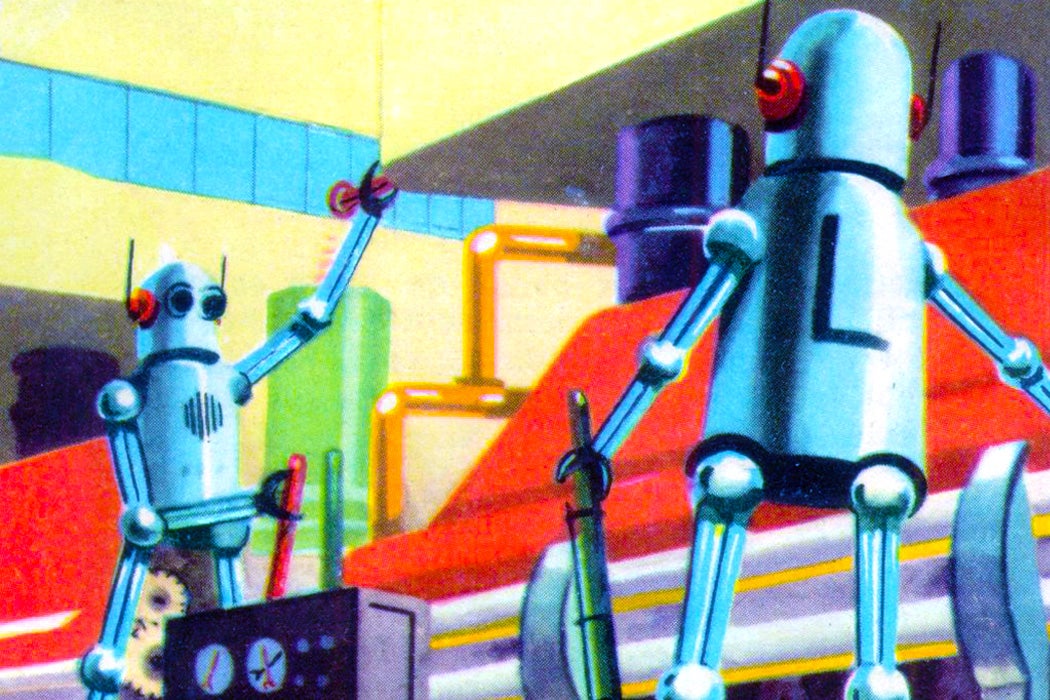It seems to be normal that the first emotion associated with accelerated velocity is a sense of exhilaration and a desire for still further speed. However, as the acceleration continues, there comes another feeling, particularly if this change is a radical departure from the normal pace of operations or activities. This change is a feeling of apprehension, a sense of misgiving concerning whether this speed can be properly controlled and whether it can be lived with effectively.
So scholar Leon C. Megginson wrote all the way back in 1963, at the very start of the automated workplace. He noted that President Kennedy called reaching full employment as machines were increasingly replacing humans to be “the major domestic challenge of the sixties.” Although we have ventured far into the Age of Machines since then, we continue to grapple with questions about automation’s long-term impact on our everyday lives. Megginson’s article shows that we predicted several of our current conundrums long before they began manifesting in our workplaces and economies.
Bigger Job Descriptions
Today’s job-seekers will tell you that job descriptions ask more and more from even an entry-level candidate.
Megginson foresaw this in the sixties: “Increased mechanization and a continual move toward an economy based on automation have inevitably led to, and will continue at an accelerated rate to lead to, an immensely increased degree of diversification and adaptability on the part of the individual employee.” He went on to predict that “narrow and rigid job classifications…will be eliminated in the future.”
Today’s job titles show that positions bleed into one another. “V.P. of Misc Stuff” and “Director of First Impressions” are two quirky job titles that are catching on, as they encapsulate the idea that V.P.s may have to do a bit of everything, and receptionists now do far more than answer phones and schedule appointments. Narrow and rigid job classifications do seem to be dissolving, per Megginson’s prediction.
Unemployment and Displacement
Megginson foresaw the crucial difference between unemployment and displacement. While machines had the potential to create new opportunities and jobs, he saw that the displacement they caused was equally significant.
Consideration of these displaced persons has led management both from its own sense of social conscience and from external pressure—to provide a variety of social shock absorbers—such as severance pay, dislocation pay, pensions (including earlier retirement), unemployment insurance, guaranteed employment or wages (including supplemental unemployment compensation payments), and so forth.
Even these have proven insufficient in the age of automation. The increasing popularity of universal basic income may be a related response. The economy is unlikely to revert to workflows that rely entirely on human labour, but there is a recognition that the frustrated potential of unemployed workers needs an outlet. The provision of basic economic needs may allow this emerging class of redudant workers to seek fulfillment in other ways.
The Human Element
Megginson underlined the limits of technology, writing, “there is much more to solving a mathematically complex problem than just applying the correct mathematical formulas. Someone must conceive it, determine how it is to be solved, program the machine, and then interpret the results.”
Get Our Newsletter
One thing Megginson did not anticipate was the extent to which humans would indeed become replaceable. He maintained that there were some functions machines would never be able to perform—a statement many tech leaders might quibble with. With self-driving cars, machines that can write symphonies, and a new level of robotic intimacy, we seem determined to prove that anything humans can do, machines can do better.
Any smartphone user with tell you that machines are getting smarter and smarter, and able to consider huge numbers of variables (ask Google Maps for the best way home at different times of day for a quick example). At the same time, they are still very much limited to their own parameters and unable to account for the irrational, often incalculable aspects of human life. Perhaps there will still be a place for humans in the mechanized future after all.







